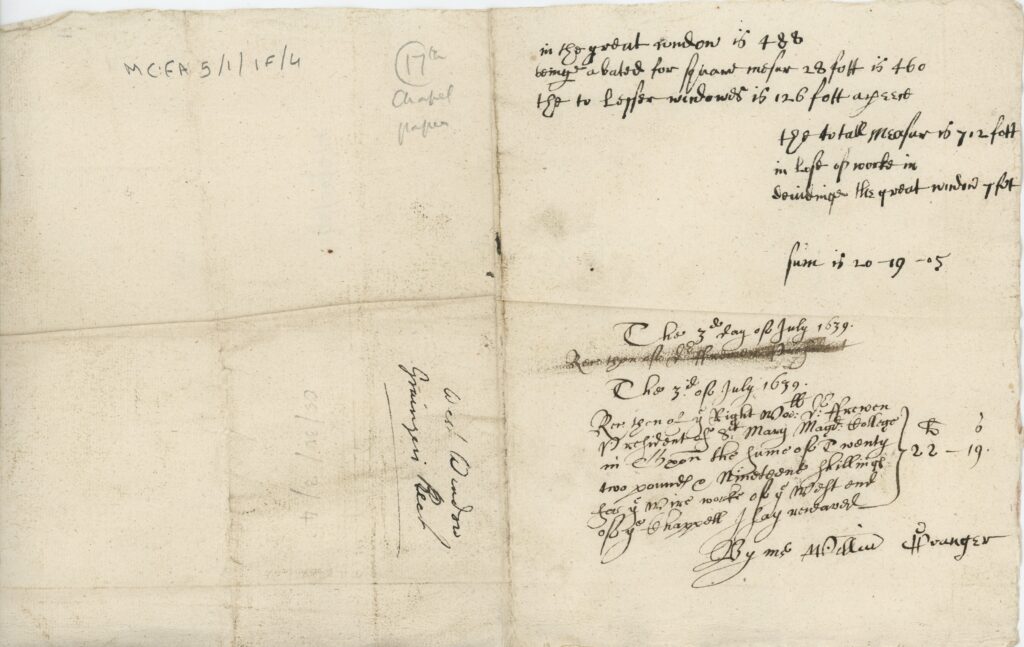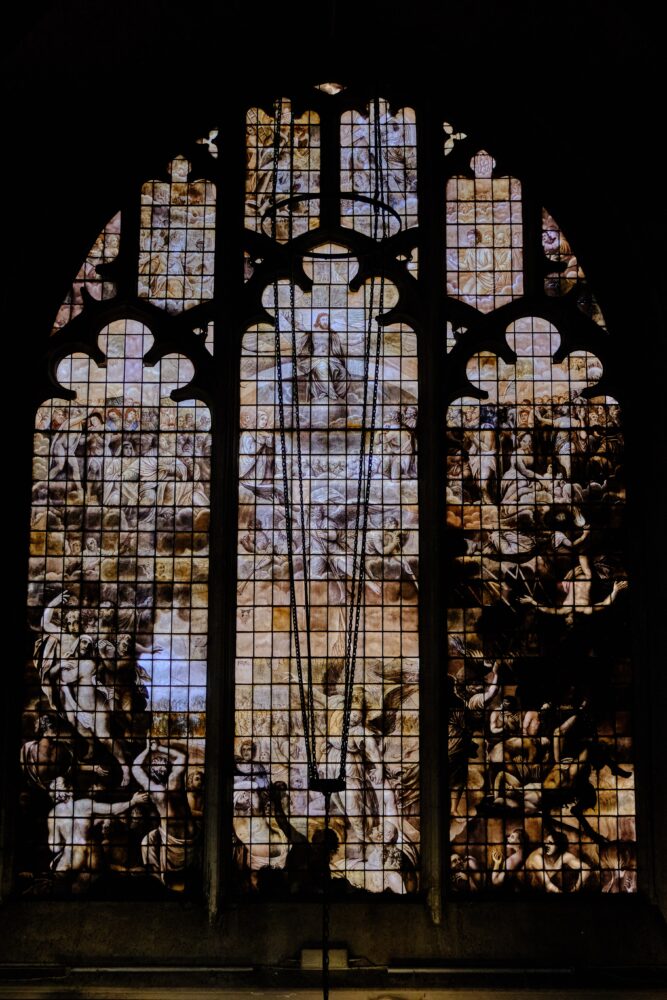


Producing a chapel window involved an extensive amount of skilled labour. Richard Greenbury was responsible not only for the West Window but for painted glass throughout the Antechapel, including the saints distributed in adjacent windows. He also produced a pair of painted portraits of Charles I and Henrietta Maria, which are now visible in the College Hall.
Numerous specialists were involved in providing materials and work to install the West Window. For the glass pieces to be connected and fitted into the window bay, large quantities of wire were necessary. Although Greenbury produced the glass, a mason was responsible for their assembly and insertion into the Antechapel’s architectural framework.


A receipt of 3 July 1639 documents the cost of wire used to secure the many pieces of Greenbury’s painted glass into the different window bays throughout the College Antechapel. Requiring 712 total feet of wire, this component of the project cost the College 22 pounds and 19 shillings. Paid to Mr. William Granger, the receipt reflects the various artisans who brought Greenbury’s image to light.


This lily from Magdalen’s art collection is a representative example of painted glass. When installing the glass in a window, it was necessary for the painted surface to faced inwards. This would have protected the pigments from the outdoor elements. Even indoors, however, the paint could flake off over time, as evident in the minor losses in the lily’s design.


A receipt, written and signed by John Jackson (the mason from the above bill who produced Greenbury’s models), records the payment he received of 23 pounds for ‘settinge up’ the West Window. This receipt was written for the purpose of confirming payment and keeping a record of Jackson’s completed commission. The date on this receipt indicates that the window was fully finished by July 4, 1640. A separate document from 1638 records the start of Jackson’s contract with the college.